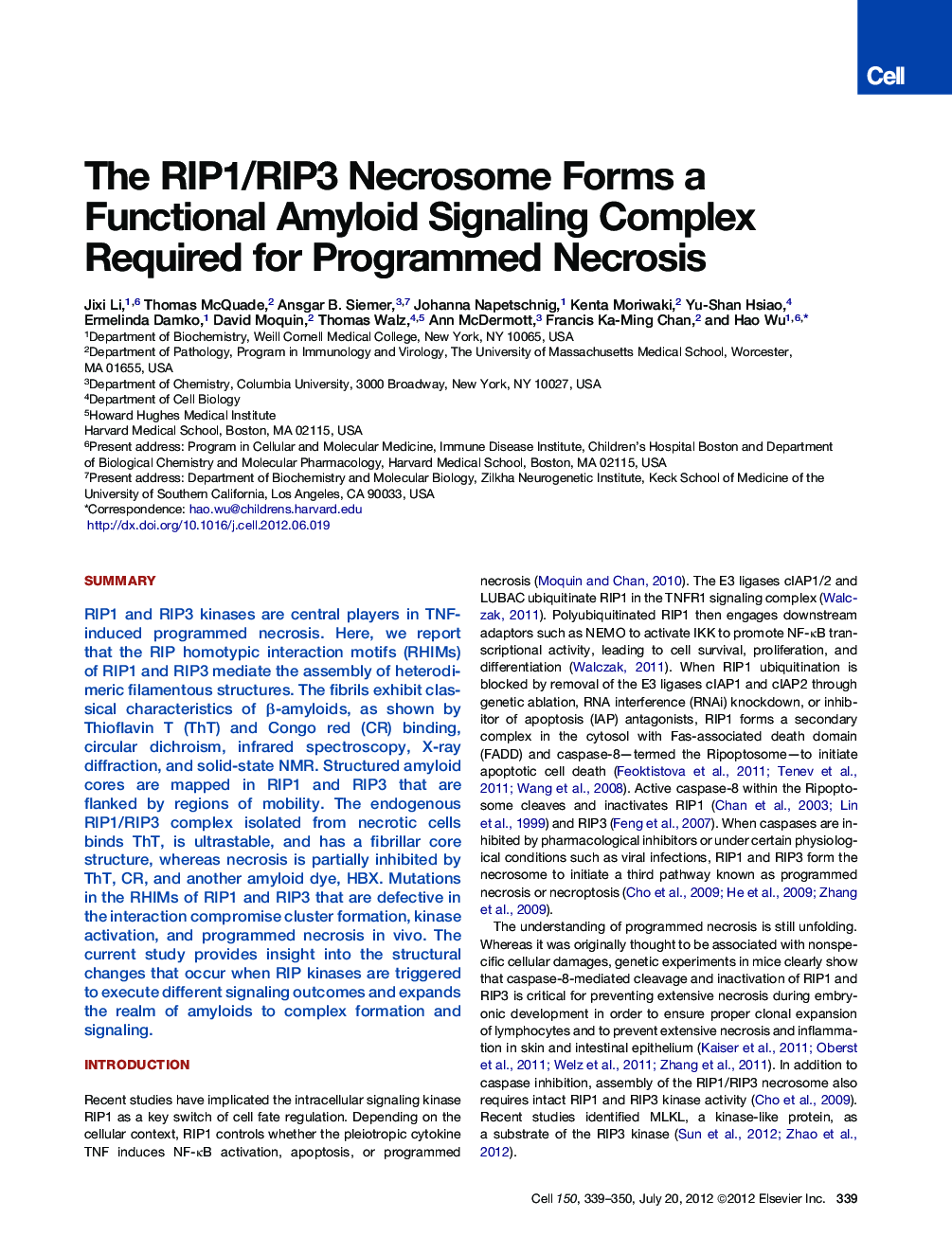| کد مقاله | کد نشریه | سال انتشار | مقاله انگلیسی | نسخه تمام متن |
|---|---|---|---|---|
| 2035997 | 1072240 | 2012 | 12 صفحه PDF | دانلود رایگان |

SummaryRIP1 and RIP3 kinases are central players in TNF-induced programmed necrosis. Here, we report that the RIP homotypic interaction motifs (RHIMs) of RIP1 and RIP3 mediate the assembly of heterodimeric filamentous structures. The fibrils exhibit classical characteristics of β-amyloids, as shown by Thioflavin T (ThT) and Congo red (CR) binding, circular dichroism, infrared spectroscopy, X-ray diffraction, and solid-state NMR. Structured amyloid cores are mapped in RIP1 and RIP3 that are flanked by regions of mobility. The endogenous RIP1/RIP3 complex isolated from necrotic cells binds ThT, is ultrastable, and has a fibrillar core structure, whereas necrosis is partially inhibited by ThT, CR, and another amyloid dye, HBX. Mutations in the RHIMs of RIP1 and RIP3 that are defective in the interaction compromise cluster formation, kinase activation, and programmed necrosis in vivo. The current study provides insight into the structural changes that occur when RIP kinases are triggered to execute different signaling outcomes and expands the realm of amyloids to complex formation and signaling.
Graphical AbstractFigure optionsDownload high-quality image (358 K)Download as PowerPoint slideHighlights
► RIP1 and RIP3 kinases form a heterodimeric functional amyloid signaling complex
► The recombinant RIP1/RIP3 fibrils exhibit classical characteristics of β-amyloids
► The endogenous RIP1/RIP3 complex binds amyloid dyes and is ultrastable
► Amyloid core mutations of RIP1 and RIP3 compromise kinase activation and necroptosis
Journal: - Volume 150, Issue 2, 20 July 2012, Pages 339–350